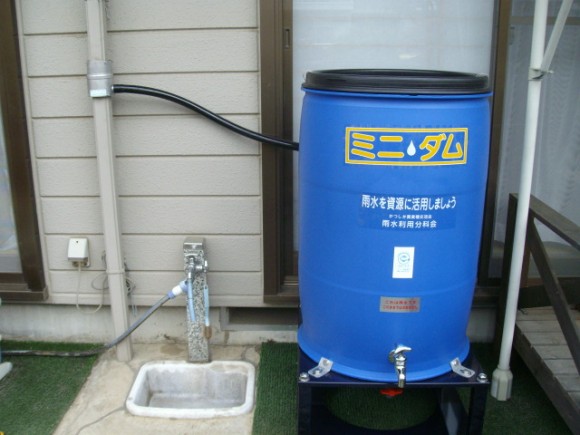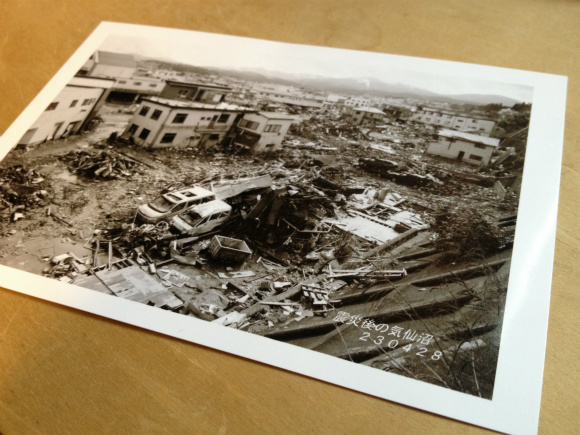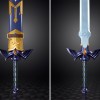The recruitment poster for the Fukushima police force is moving, to say the least. It definitely singles out only the most dedicated, most driven potential recruits. The poster features a person wearing an anti-radiation suit, walking through some desolate, post-tsunami wasteland, with text saying hauntingly, “There is work here that only I can do…”. Japanese posters often omit words and thus have implied messages, but this recruitment poster is relatively explicit. And it has gained some attention for its darkness and severity. It’s pretty plain that you should be looking forward to working in hazardous conditions.
A police spokesperson confirmed that they were seeking people with strong mettle precisely because of the still-dire situation in Fukushima. The photo is from May 2011 (the disaster was in March), shows the main damaged nuclear reactor in the background, and was unanimously selected for the poster in February this year. The desire for driven new officers who won’t give up on the work or come for the job thinking about it too casually is understandable, but there could also be a subtext, which is that they don’t just want anybody either.
source: Asahi via Jin (Japanese)














 Japanese government will check and judge new baby name pronunciations, presents guidelines
Japanese government will check and judge new baby name pronunciations, presents guidelines Station of despair: What to do if you get stuck at the end of Tokyo’s Chuo Rapid Line
Station of despair: What to do if you get stuck at the end of Tokyo’s Chuo Rapid Line Japanese train station vending machine has the best souvenirs for rail otaku
Japanese train station vending machine has the best souvenirs for rail otaku This downtown Tokyo cafe is like a time machine that takes you back 50 years into the past
This downtown Tokyo cafe is like a time machine that takes you back 50 years into the past Totoro towels gently glow in the dark to set the Ghibli nighttime mood in your home【Photos】
Totoro towels gently glow in the dark to set the Ghibli nighttime mood in your home【Photos】 Celebrating legal marriage days in Japan with budget-friendly photoshoots
Celebrating legal marriage days in Japan with budget-friendly photoshoots Shakey’s is back! All-you-can-eat pizza chain returns to downtown Tokyo’s Shinjuku
Shakey’s is back! All-you-can-eat pizza chain returns to downtown Tokyo’s Shinjuku Evangelion and McDonald’s Japan launch first-ever collaboration with transforming figures【Video】
Evangelion and McDonald’s Japan launch first-ever collaboration with transforming figures【Video】 Japan’s top 10 food travel destination prefectures【Survey】
Japan’s top 10 food travel destination prefectures【Survey】 Starbucks Japan just released a new matcha green tea latte, but is it any good?
Starbucks Japan just released a new matcha green tea latte, but is it any good? Japanese company develops classy heavy metal band frames for glasses
Japanese company develops classy heavy metal band frames for glasses One of Japan’s rarest sweets is a sell-out hit that looks and tastes like frost
One of Japan’s rarest sweets is a sell-out hit that looks and tastes like frost Studio Ghibli showcases traditional craftsmanship with new wallet range
Studio Ghibli showcases traditional craftsmanship with new wallet range Mysterious light-up rainy night-sound Totoro figure doesn’t actually show a scene from the anime
Mysterious light-up rainy night-sound Totoro figure doesn’t actually show a scene from the anime Major Japanese city is abolishing extracurricular activities at all of its middle schools
Major Japanese city is abolishing extracurricular activities at all of its middle schools Spirited Away and Princess Mononoke plushies show a softer side of formidable Ghibli characters
Spirited Away and Princess Mononoke plushies show a softer side of formidable Ghibli characters Possessing Harry Potter’s Sword of Godric Gryffindor is now illegal in Japan
Possessing Harry Potter’s Sword of Godric Gryffindor is now illegal in Japan Uniqlo announces first-ever collaboration with horror manga master Junji Ito【Photos】
Uniqlo announces first-ever collaboration with horror manga master Junji Ito【Photos】 J-pop mega star Ado reveals she’s been living in the U.S., may not understand language acquisition
J-pop mega star Ado reveals she’s been living in the U.S., may not understand language acquisition Starbucks Japan is calling it quits with paper straws
Starbucks Japan is calling it quits with paper straws Studio Ghibli releases new range of cardigans for anime fans
Studio Ghibli releases new range of cardigans for anime fans Japan’s most popular castle raising ticket prices by up to 200 percent for non-local tourists
Japan’s most popular castle raising ticket prices by up to 200 percent for non-local tourists Furikake rice seasoning sales are soaring, which is bad news for Japan as a whole
Furikake rice seasoning sales are soaring, which is bad news for Japan as a whole Studio Ghibli heroine cardigans give you warmth and strength to face everyday challenges
Studio Ghibli heroine cardigans give you warmth and strength to face everyday challenges Eight unforgettable hot springs, as recommended by Japan’s “Professor Bath”
Eight unforgettable hot springs, as recommended by Japan’s “Professor Bath” McDonald’s new Happy Meals offer up cute and practical Sanrio lifestyle goods
McDonald’s new Happy Meals offer up cute and practical Sanrio lifestyle goods Foreign tourists on Shinkansen bullet train break suitcase etiquette, angering local passengers
Foreign tourists on Shinkansen bullet train break suitcase etiquette, angering local passengers [Deleted] Article written for April Fool’s Day 2018
[Deleted] Article written for April Fool’s Day 2018 Japanese government to make first change to romanization spelling rules since the 1950s
Japanese government to make first change to romanization spelling rules since the 1950s Foreigner’s request for help in Tokyo makes us sad for the state of society
Foreigner’s request for help in Tokyo makes us sad for the state of society Japanese convenience store Family Mart announces abolishment of eat-in spaces
Japanese convenience store Family Mart announces abolishment of eat-in spaces Life-size vibrating Legend of Zelda Master Sword for sale from Nintendo【Photos】
Life-size vibrating Legend of Zelda Master Sword for sale from Nintendo【Photos】 Princesses, fruits, and blacksmiths: Study reveals the 30 most unusual family names in Japan
Princesses, fruits, and blacksmiths: Study reveals the 30 most unusual family names in Japan Studio Ghibli releases free-download board game — Here’s how to play it without reading Japanese
Studio Ghibli releases free-download board game — Here’s how to play it without reading Japanese Celebrating legal marriage days in Japan with budget-friendly photoshoots
Celebrating legal marriage days in Japan with budget-friendly photoshoots Shakey’s is back! All-you-can-eat pizza chain returns to downtown Tokyo’s Shinjuku
Shakey’s is back! All-you-can-eat pizza chain returns to downtown Tokyo’s Shinjuku Evangelion and McDonald’s Japan launch first-ever collaboration with transforming figures【Video】
Evangelion and McDonald’s Japan launch first-ever collaboration with transforming figures【Video】 Japan’s top 10 food travel destination prefectures【Survey】
Japan’s top 10 food travel destination prefectures【Survey】 Starbucks Japan just released a new matcha green tea latte, but is it any good?
Starbucks Japan just released a new matcha green tea latte, but is it any good? 10 great quirky museums to beat the Japan rainy season blues
10 great quirky museums to beat the Japan rainy season blues 16-year-old Japanese girls will no longer be allowed to marry, age of legal adulthood moves to 18
16-year-old Japanese girls will no longer be allowed to marry, age of legal adulthood moves to 18 Low price, free booze and curry, late check-out, and great location — Akihabara capsule hotel has it all
Low price, free booze and curry, late check-out, and great location — Akihabara capsule hotel has it all Better know a train nerd: 36 different classifications for Japan’s “densha otaku”
Better know a train nerd: 36 different classifications for Japan’s “densha otaku” Starbucks Japan releases a new Frappuccino that looks and tastes like a floral bouquet
Starbucks Japan releases a new Frappuccino that looks and tastes like a floral bouquet One of Japan’s rarest sweets is a sell-out hit that looks and tastes like frost
One of Japan’s rarest sweets is a sell-out hit that looks and tastes like frost